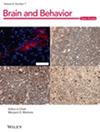Brain Microstructural Alterations in Children Post-COVID-19 Infection Through VBM, SBM, and Structural Covariance Network Analysis
Abstract
Background
Children represent a particularly vulnerable group to the long-term consequences of COVID-19 due to their ongoing neurodevelopment. This study aimed to identify transient and persistent structural alterations in children recovering from the infection by comparing pretreatment and posttreatment MRI scans and to evaluate differences in brain morphology and network organization relative to age- and sex-matched healthy controls.
Methods
A retrospective cohort of 26 children aged 8–12 years with confirmed COVID-19 was compared to 26 healthy controls. All participants underwent high-resolution T1-weighted MRI on a 3T scanner using identical acquisition protocols. Standard VBM and SBM pipelines were applied to quantify cortical volume, thickness, and sulcal depth, followed by SCN analysis to construct correlation matrices based on gray matter metrics. Graph theoretic metrics, including clustering coefficients, eigenpath lengths, small-worldness, and global/local efficiencies, were computed under different network sparsity thresholds.
Results
Cortical volume analyses revealed reductions in regions including the cingulate cortex, hippocampus, and superior temporal gyrus among children post-COVID-19, with within-group comparisons showing decreases in the left middle cingulate cortex (7.4–6.9 cm3), left postcentral gyrus (12.2–10.8 cm3), and right anterior cingulate cortex (2.1–1.8 cm3). Partial recovery of sulcal depth and cortical thickness was observed in the superior temporal gyrus (sulcal depth from 210.3 to 198.5 mm2, thickness from 2.34 to 2.15 mm). Structural covariance network analysis demonstrated lower global efficiency and higher small-worldness in the post-COVID-19 group compared to controls, along with increased characteristic path length, whereas local connectivity measures (clustering coefficient and local efficiency) remained relatively stable.
Conclusions
Children recovering from COVID-19 may exhibit structural brain changes and network connectivity disruptions, some of which show partial resolution over time, whereas others persist. Long-term follow-up through comprehensive neuroimaging and clinical evaluation is necessary to clarify the potential impact on development.


 求助内容:
求助内容: 应助结果提醒方式:
应助结果提醒方式:


